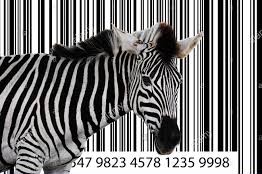What Was Before Barcodes?
We take barcodes and their ability to simplify inventory management for granted. These black-and-white-striped symbols have become so ubiquitous that we rarely stop to consider what life was like before their invention. Yet, inventory tracking has existed for centuries, and the evolution of this crucial process reveals the ingenious ways businesses have responded to the challenging task of managing their warehouses.
Crude But Effective Ancient Methods
Archeological evidence of inventory management’s origins dates back to tally sticks and clay tokens as old as 4,000 years. In ancient Babylon, merchants used clay tablets to record shipments of goods. Clay tablet-based lists were an early example of record-keeping and eventually contributed to the development of modern writing systems.
Several thousand years ahead in the pencil-and-paper age, retail and wholesale businesses relied on rudimentary tracking methods, including “closing for inventory,” where employees would manually count items and keep records on paper ledgers. Although this process was resource-intensive, it was essential for maintaining a clear view of stock levels and ensuring seamless operations.
19th–20th Century: Advancements in Mechanical Devices
As the retail and wholesale sectors expanded during the 19th and 20th centuries, the need for more efficient inventory tracking systems intensified. Businesses adopted filing systems and card indexes to store and manage inventory data, helping them to monitor and reorder stock more accurately.
The history of computerized inventory systems goes back to the 1880s when Herman Hollerith invented punch cards for use in tabulating the US Census. This system allowed more efficient recording of data, speeding up the tabulation process and reducing the likelihood of errors. Hollerith’s system was so revolutionary that organizations worldwide adopted it, setting the foundation for the development of modern data processing.
In 1948, a Drexel University graduate student named Norman Joseph Woodland took on a dilemma posed by a local Philadelphia grocery store owner. The store owner needed a way to move customers through checkout faster. Woodland said inspiration came to him while he was relaxing on a Florida beach. He took his knowledge of Morse code and applied it to the problem, extending the long and short dots and dashes of the code into vertical bars. The pattern was only readable in one specific direction.
Woodland began working with another Drexel University alum, Bernard Silver, to evolve that pattern. The pattern of stretched-out thin and thick lines representing Morse code dots and dashes became a more compact, bullseye form that shopkeepers could use to keep track of products. It could be read regardless of its vertical or horizontal orientation. Unfortunately, the scanners required to read the codes were, at the time, cumbersome and expensive.
With the advent of lasers and microchips, scanners became more affordable and compact. Fast-forward to the 1960s and ’70s, and computer technology began to change the way businesses managed inventory. The introduction of computerized systems allowed businesses to automate tasks that previously depended on manual input.
The first grocery store item scanned with modern barcode technology was a pack of gum run through a scanning system at Marsh’s Supermarket in Troy, Ohio, in 1974.
Although their precursors existed since the 1940s, product barcodes were broadly introduced after the success of the scan at Marsh’s. Barcodes allowed companies to track specific products more rapidly and accurately. They also automated inventory data collection, helping businesses to stay on top of their inventory levels more efficiently. A simple scan with a handheld laser device delivered data into a computerized inventory management system.
Beyond the Supermarket
Barcodes became ubiquitous with supermarket products. They’re now also used in warehouses and transportation to identify products, tabulate inventory, and keep track of goods en route from producer to warehouse and from warehouse to store shelf.
Barcodes aren’t just for consumables like canned goods. Every new publication gets a barcode: if it’s a book, it gets an ISBN (International Standard Book Number). If it’s a magazine or other monthly publication, it gets an ISSN (International Standard Serial Number). CDs, audiobooks, e-books, software, and DVDs all have their own types of product code, which translates into the barcode affixed on a label to the product.
Generally, products in the US and Canada get a 12-digit universal product code (UPC). Products sold in the rest of the world get an EAN (European Article Number), which is 13 digits long. But all books have an EAN. And while UPCs use some of the first digits to identify the country of manufacture, books got their own “country,” called “Bookland,” in the 1980s. Bookland is associated with the prefixes 978 and 979.
From Barcodes to QRs to NFC
An international nonprofit called GS1 issues all barcodes for products to ensure every product, and every different iteration of a product (size, color, etc.), gets a unique product number. This type of product identification is essential for proper inventory management and tracking.
Barcodes identify the country of origin, the manufacturer, the product, and the variation of the product (differentiating a small, pink T-shirt from an extra-large, navy blue T-shirt). These identifiers make it possible to track the exact numbers of individual items of a specific type through the supply chain and out the retail door.
New forms of technology that complement but do not replace barcodes include QR (quick response), RFID (radio frequency identification), and NFC (near-field communication) devices. RFID got its start in the early 20th century, and the British used it in WWII to distinguish enemy aircraft.
RFID tags are now used for theft control: those tags are the ones that set off the alarms if you exit a store with merchandise without paying. QR codes can contain far more information than barcodes. They can direct your phone to a website, launch a game or a survey, and give you specifications for a product that barcodes don’t include.
NFC devices, such as your phone (when you switch on near-field communication), can communicate with each other. An example is using a payment app at a supermarket by holding your phone close to the reader at checkout. All these types of codes and devices interact with readers, detectors, and/or databases to provide critical information to merchants or process transactions for consumers.
The introduction of computer technology changed the landscape of inventory management forever. By automating tasks that previously required manual input, businesses could reduce labor costs, minimize errors, and enhance overall efficiency. Computerized inventory systems, which would eventually become integrated with barcode technology, marked the dawn of a new era in retail and wholesale management.
Businesses have used the continuous evolution of technology to keep up with the demands of the rapidly changing retail and wholesale sectors. In the past, they used everything from clay tablets to pencil and paper systems for taking inventory before barcodes. Today, these sectors continue to progress with new technologies such as QR codes, IoT devices, and sophisticated inventory management software. This new technology ensures inventory management stays one step ahead in this ever-changing industry.







